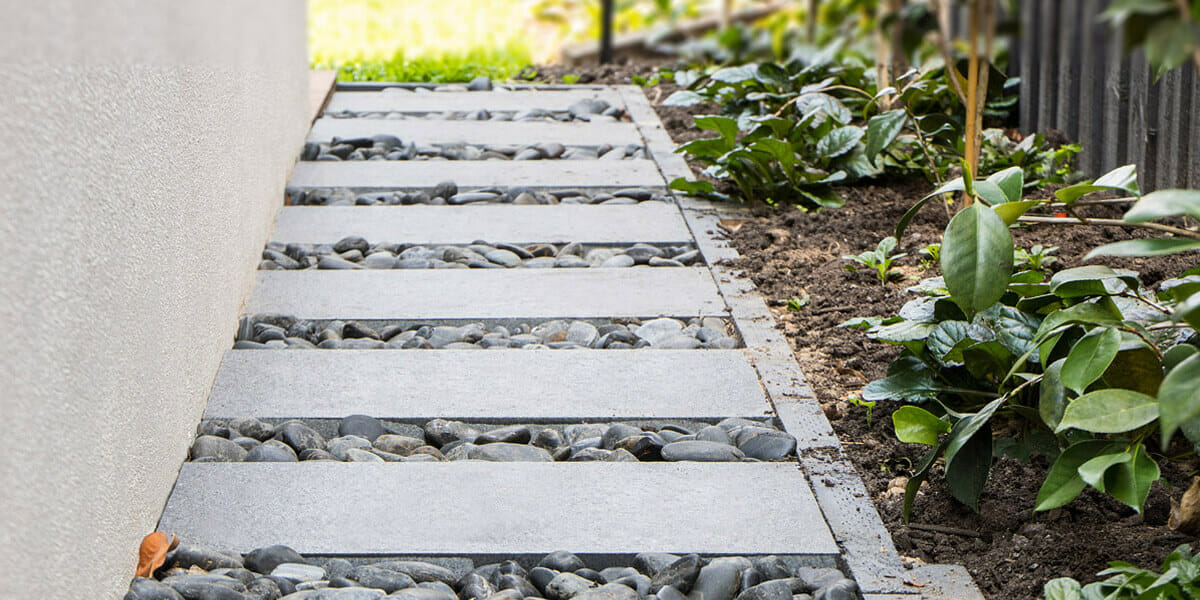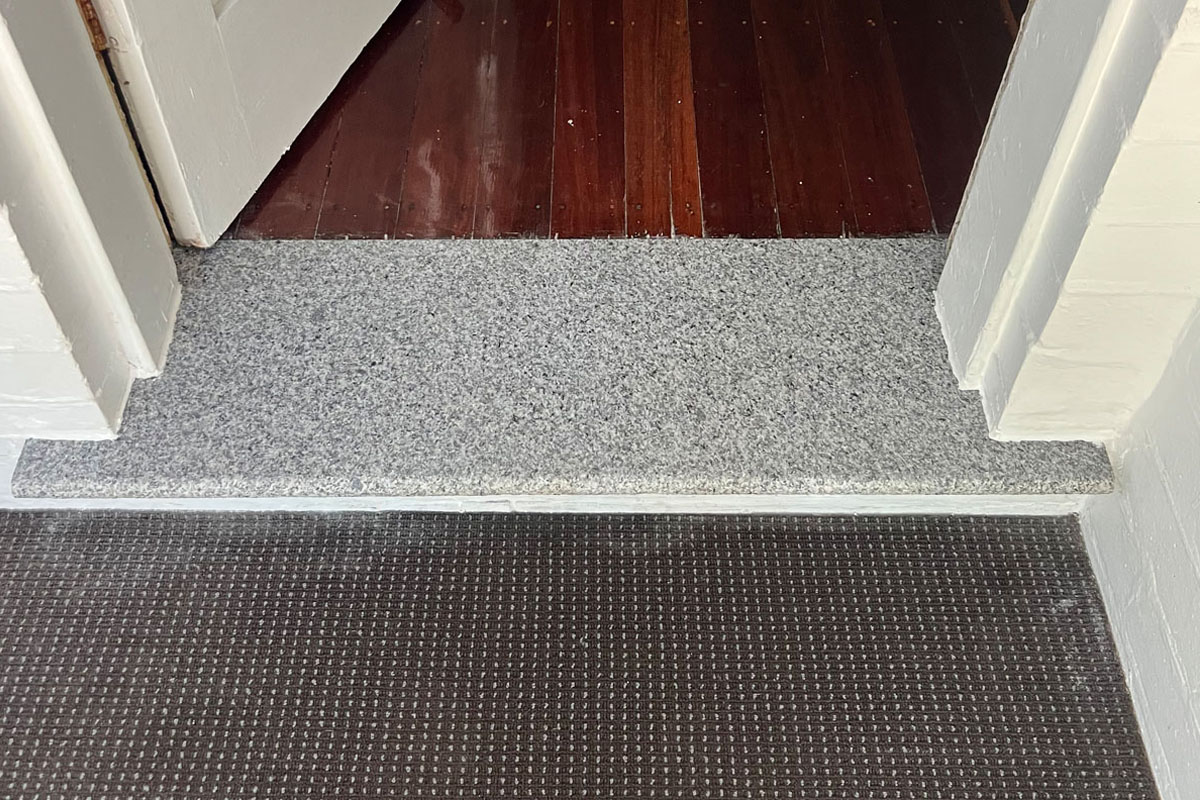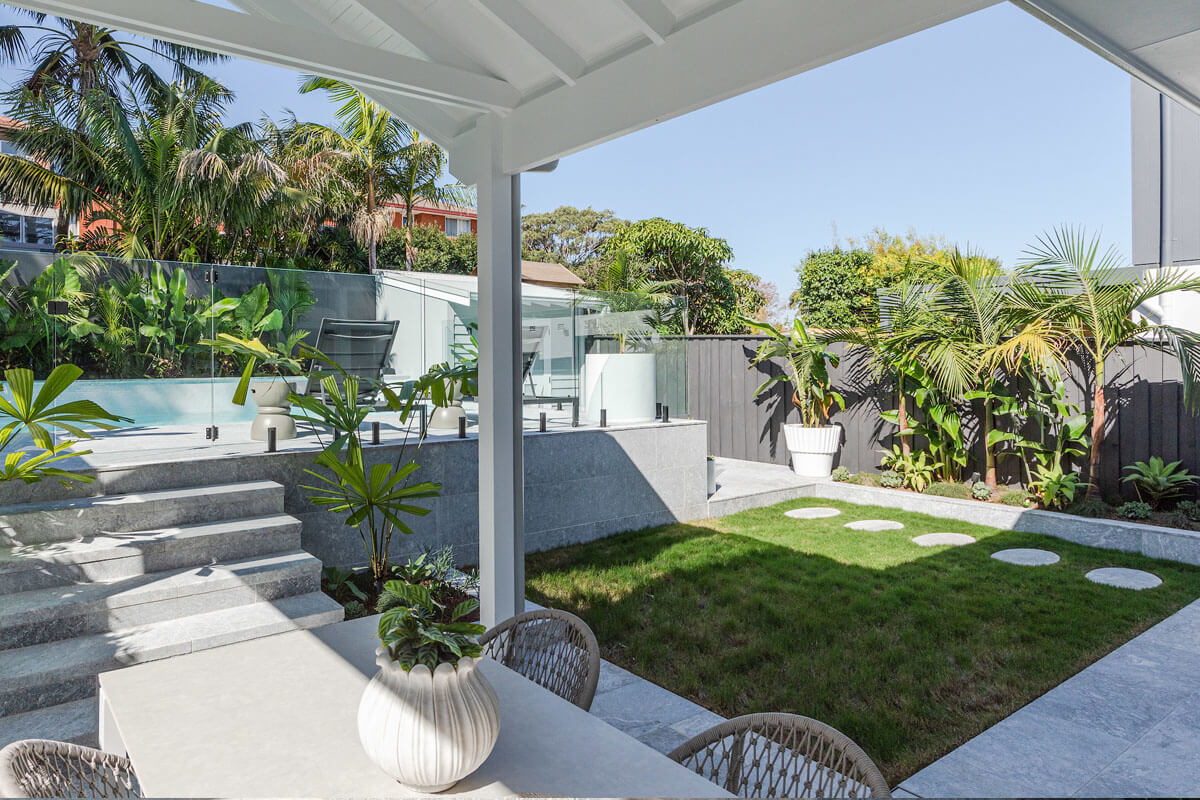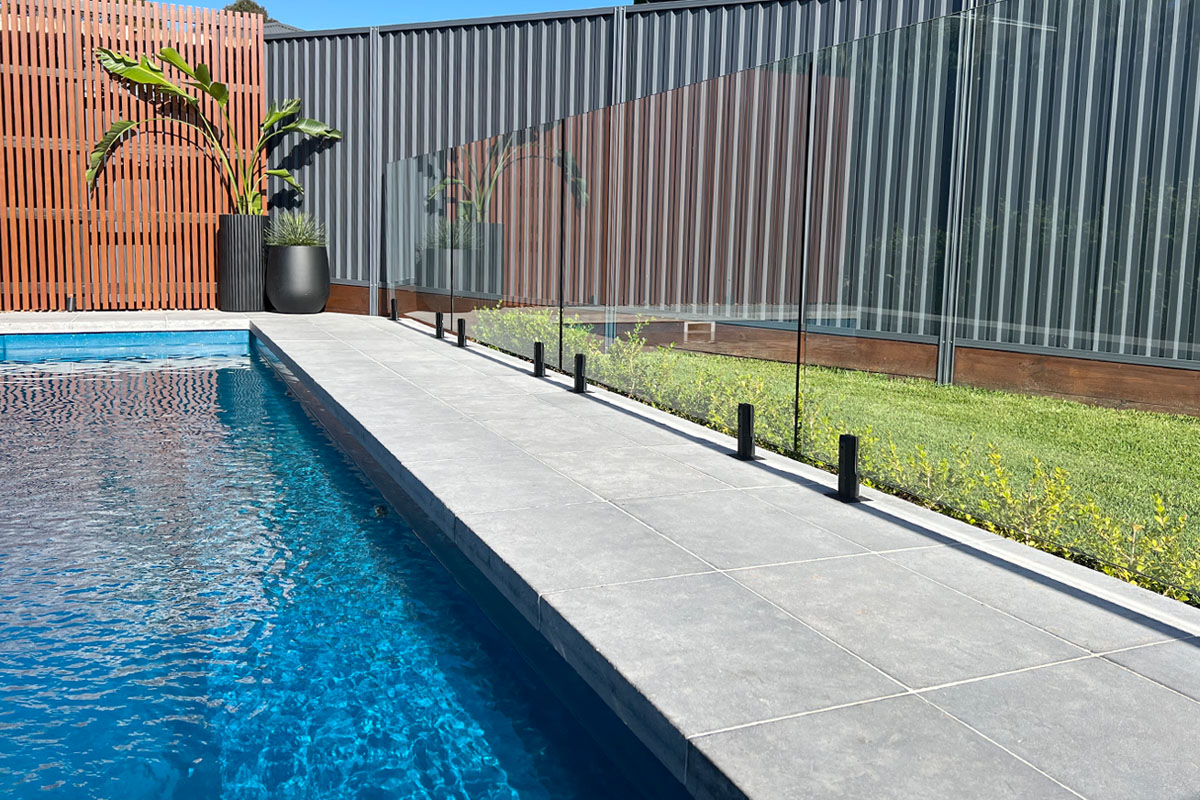How to Choose Groundcover to Plant between Pavers?
So your front (or back) yard has pavers made from concrete, brick, or stone.
These may even be uniform or irregular shaped.
They may be in partial shade or fully exposed to the sun.
Regardless of the type of paver you have, chances are that there is some kind of gap between them.
As such, there are plenty of benefits of filling those gaps by planting a ground cover plants between the pavers.
While the gaps will vary in size.
For instance walkways generally have larger gaps than normal pavers hence creating that stepping stone effect.
If the gaps are neglected they become a catchall for weeds.
And if left unattended these weeds can grow out over time and the pavers may even begin to shift.
And you want to avoid this at all costs!
So what are your options?
There’s sand.
But it’s a temporary solution as over time, sand will just wash away.
Gravel or cement are other alternatives but they lack that natural aesthetic.
That’s why we believe nothing quite compares to the wholesome appeal of ground-cover.
Initially, this may seem like a strange concept.
Because from an early-age, we’re taught not to walk on plants.
So planting a delicate-looking creeper along your walkway may seem a little odd.
What many don’t realise is that there are a number of hard, foot traffic-withstanding varieties of ground-cover that are perfect for use along paths, walkways, and other treading areas.
So, how do you get started?
Before choosing the creeping perennials to plant between pavers.
We recommend assessing your front or backyard as well as the climate of your area.
By matching the plants to the environment, you will be able to create the right look for your garden.
For example: it makes no sense planting tropical plants in an arctic location.
While that’s an extreme example, you get the idea.
So let’s review all the considerations you must make prior to venturing out to your local nursery.
HOW MUCH SUNLIGHT?
Reviewing how much your pavers are exposed to sunlight is important when finding the right plant.
Over the course of any day, keep a record of the sunlight exposure to the chosen area.
You want to determine whether your garden receives:
- Full or direct sun,
- Morning sun with afternoon shade
- Morning shade with afternoon sun, or
- Mostly shade.
Once you’ve deciphered this, here are some plants that work well in different settings:
- Ground-cover varieties that enjoy full sun include Creeping Thyme and Dymondia.
- Sedums, Chamomile, and Cranesbill work well in some shade.
- Creeping Dogwood, Corsican Sandwort, Sweet Woodruff, and Blue Star Creepers are happy in damp shade.
HOW MUCH FOOT TRAFFIC?
A general rule of thumb when selecting creeping perennials is that the more delicate the leaf structure, the less traffic the plant will be able to withstand.
As a result, you should try to determine how often people will be treading on the ground-cover.
Will it be several times a day, once a day, or just once a week?
Depending on the above, you can then select the following plants:
- Rupturewort is super tough and almost carpet-like, able to handle heavy foot traffic.Its foliage is nice and green, and turns bronze-red during winter.
- Creeping Wire Vine is another great alternative that can even be mowed!
HOW MUCH SPACE IS BETWEEN THE PAVERS?
Gaps between stone pavers are very varied and so it’s essential to find the right plants to suit these gaps.
If you plant a fast and wide-spreading plant in a pathway that only provides narrow spaces between stones.
The plants will quickly cover the stones or consume your time with maintenance and trimming.
If your gaps are narrow, you’ll need to look for plants that can be sliced into thin pieces and tucked in between the pavers.
Plants such as Blue Star Creeper and Dwarf Mondo are ideal for this.
Firstly, they spread through creating an underground root system but also their root can be divided easily using a utility knife.
On the other hand, plants with a single main stem cannot be divided.
As such, may not be ideal to plant between pavers with narrow gaps.
HOW IS SOIL DRAINAGE?
Next, you want to check the area to determine if it stays continuously damp, dry, or soggy.
You see, depending on how well-drained the site is, will help you choose plants that suit the area.
- Varieties that will tolerate consistently moist or damp soil include Mazus, Golden Creeping Jenny, Jewelmint of Corsica and Blue Star Creeper.
- Sedums and Creeping Thyme prefer better-drained soil.
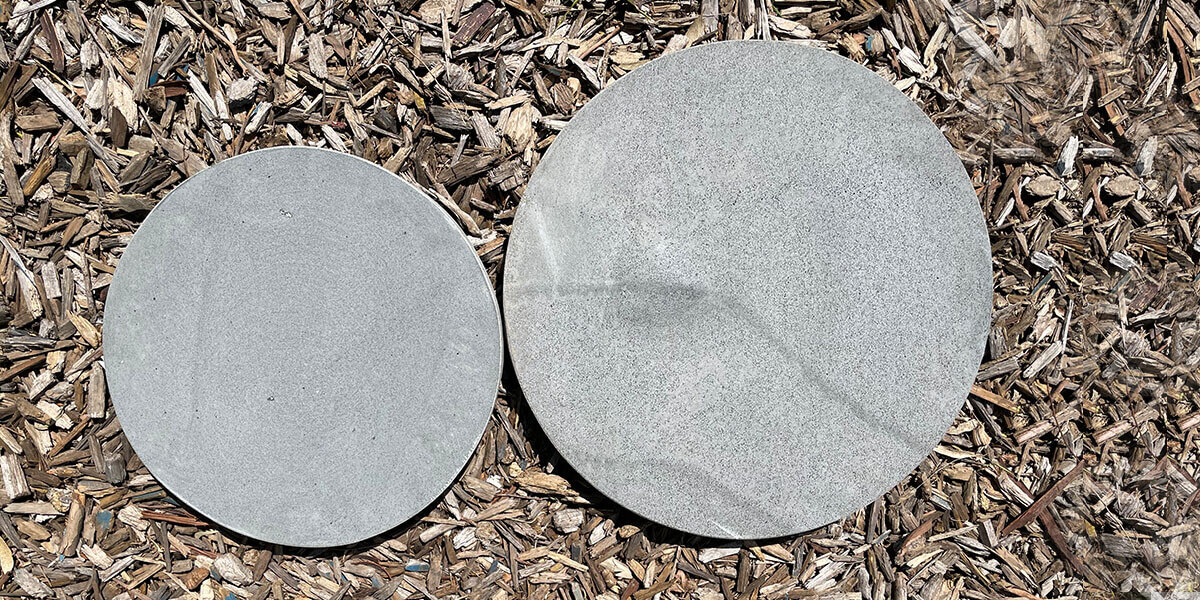
DO YOU WANT UNIFORMITY OR VARIETY?
A more formal looking outdoor area may call for a uniform effect in planting.
But for something a little more fun and natural, you may consider mixing up the uniformity with a variety of plants.
This creates a natural effect, as though the plants filled the gaps because the wind blew them there.
It also allows you to replace the plant if you find that it doesn’t compliment the paver or other surrounding plants.
We recommend aiming for a combination between uniformity and variety.
You see, using too many disparate heights and textures can look chaotic.
While using too few can create a mass space of nondescript greenery which can get boring after a while.
We suggest to aim for subtlety.
So look for combinations such as Blue Star Creeper between stones.
And a taller, more delicate Dianthus along the edges.
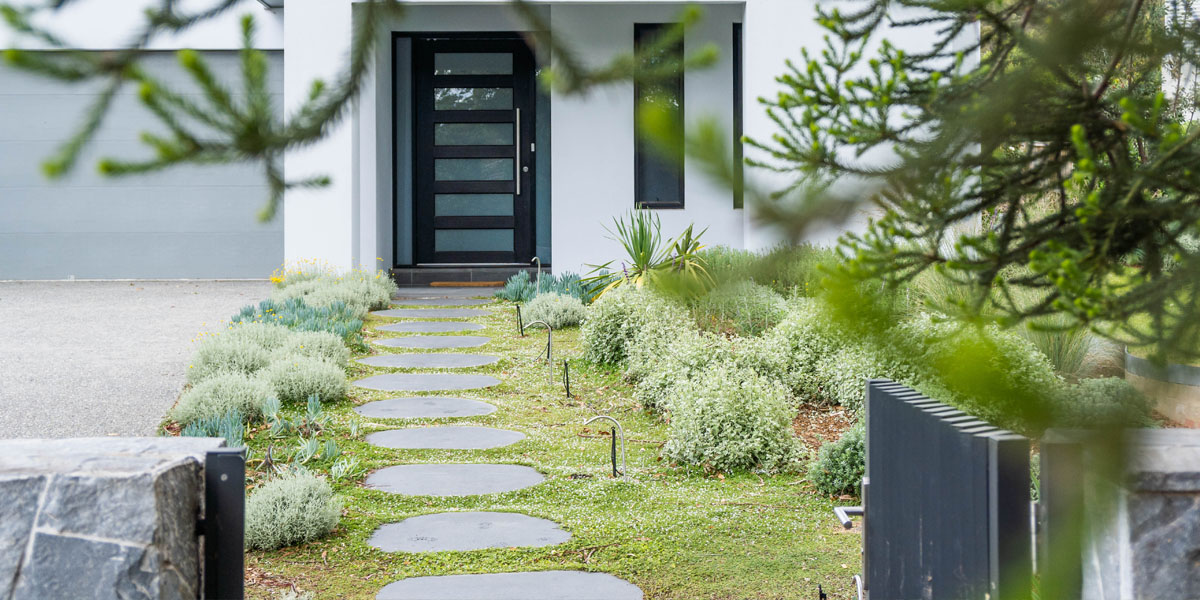 **Avatar Bluestone Organic Stepping Stones
**Avatar Bluestone Organic Stepping Stones
HOW QUICKLY DO I WANT THE GAPS FILLED?
Impatient?
Have to put your house on the market and only have a few days or weeks to fix things in the garden?
Then you’re looking for a plant that has a faster fill-in period.
You can do this by breaking slower-spreading plants like Mondo Grass or Blue Star Creeper, into smaller pieces.
Otherwise, if your gaps can handle it, plants such as Creeping Jenny and Creeping Wire Vine are both wide-spreading and fast-growing and ideal for any situation where you are pressed for time.
OUR 6 FAVOURITE GROUNDCOVERS:
- BLUE STAR CREEPER
The tiny green leaves of the Blue Star Creeper form a dense, low mat between stepping stones and patio pavers, and have delicate, blue, star-shaped flowers.
This is a wonderful creeping perennial for moist landscapes.
- MONDO GRASS
Mondo Grass spreads rapidly through underground stems to form a soft, shag pile carpet.
It makes an excellent border and gap filler for pathways.
It’s drought and frost tolerant, and can withstand light traffic.
- NATIVE VIOLET
Native Violet is a fast-spreading creeper.
It’s very low growing and so won’t steamroll other plants.
It’s easily separated to fill lots of gaps, loves moist shade, and offers pretty purple and white flowers most of the year.
![]()
- TEMPLE GRASS
Temple Grass offers fine, bright leaves and is commonly used for rockeries and between stepping stones.
It will develop clumps or ‘lumps’ on the surface, which is generally considered an attractive feature.
- CREEPING JENNY
The roundish, chartreuse leaves and yellow flowers of the Creeping Jenny make it a popular ground-cover choice.
A mat-forming perennial, it grows around 10-20 centimetres tall and spreads its roots as it grows.
- CREEPING THYME
Creeping Thyme is one of the best low-growing ground-covers, offering beautiful colours for very low maintenance.
Better yet, it handles foot traffic very well which makes it an ideal fill-in plant.
In Summary
Finding the right plant to fill the gaps between your pavers will make a world of difference to your garden.
If you need any help deciding, contact us here to speak with an expert.
